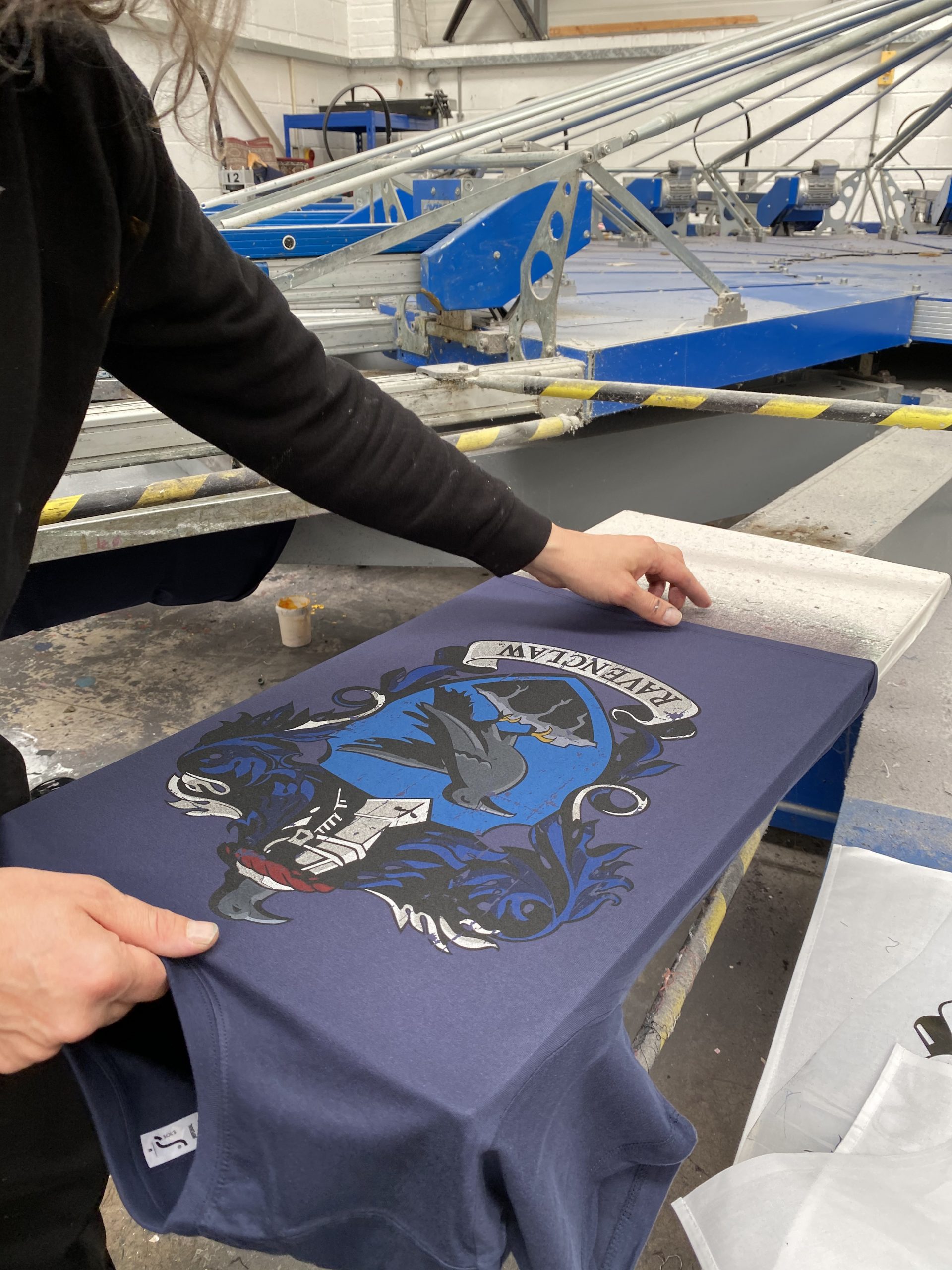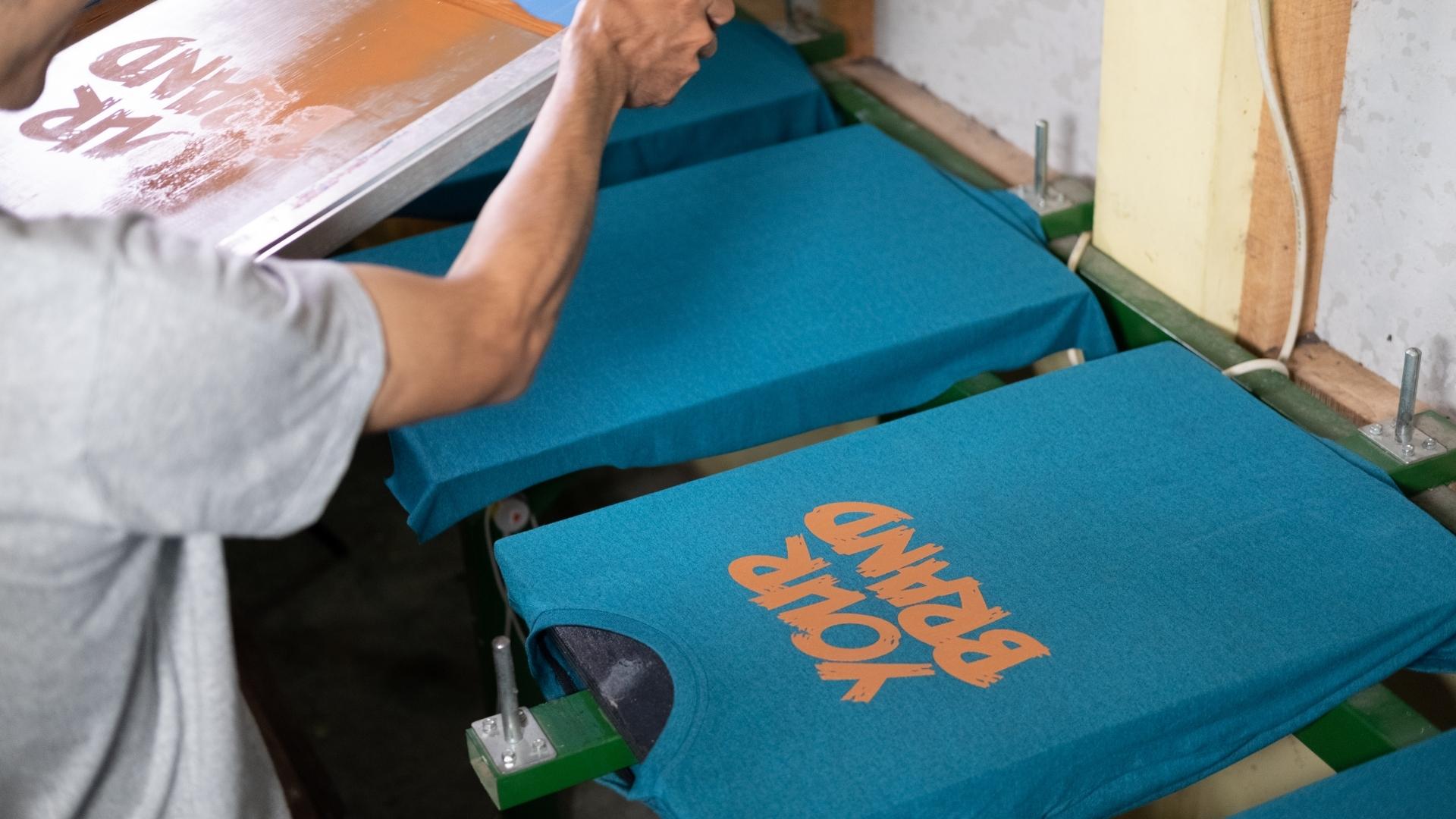The Vital Overview to Understanding Screen Printing and Its Versatile Uses
Screen printing has a rich background that dates back to ancient times, progressing right into an innovative technique utilized across different sectors today. This guide discovers the ins and outs of the screen printing process, detailing its applications in home, style, and advertising and marketing décor - 10:9 Design contact. Recognizing these basics can open imaginative potential for both industrial and imaginative tasks. The adhering to sections will certainly reveal important ideas and methods to enhance one's screen printing endeavors
The History of Screen Printing
Screen printing has roots that map back centuries, its advancement shows the creative and technological innovations of numerous cultures. Stemming in ancient China, the technique was at first made use of for enhancing fabrics and later infect Japan, where it ended up being essential to Ukiyo-e woodblock printing. The technique changed to Europe in the 18th century, where it obtained appeal among artisans and commercial printers. The innovation of image solution in the 20th century transformed screen printing, enabling more elaborate designs and greater performance. Musicians like Andy Warhol further pushed its popularity, utilizing the medium to create legendary works that blended commercialism and art. By the late 20th century, screen printing had actually developed itself as a versatile method, employed in fashion, advertising, and fine art. Today, it remains to progress, integrating digital modern technology and broadening its applications throughout various industries.
The Screen Printing Refine Explained
Screen printing changes artistic visions into tangible designs via a series of specific actions. A photo is produced and then moved onto a screen, normally made of great mesh textile extended over a framework. A light-sensitive solution is related to the screen, which is subjected to light, solidifying in locations not covered by the photo. After washing out the unhardened emulsion, a stencil is developed.
Next, the screen is put over the substratum, whether it be fabric, paper, or an additional product. Ink is after that pushed via the open locations of the stencil utilizing a squeegee, depositing the layout onto the substratum listed below. This procedure can be repeated for multiple shades, needing different screens for every color. Ultimately, the printed thing is healed making use of heat to ensure the ink sticks properly, resulting in a sturdy, dynamic layout on-line.
Kinds Of Screen Printing Techniques

In addition, specialty methods, such as discharge screen printing, remove dye from the fabric to create softer prints, while foil screen printing applies metallic foil to attain a glossy finish (10:9 Design Embroidery). Each method uses distinctive characteristics, dealing with numerous innovative demands and manufacturing ranges, ultimately increasing the possibilities within the screen printing domain
Applications of Screen Printing in Numerous Industries

Additionally, the signage and marketing fields make use of screen printing for producing eye-catching displays and banners. This method enables strong shades and detailed layouts that capture interest. In electronic devices, screen printing is employed for using conductive inks to circuit boards, necessary for component links. The home style sector welcomes screen printing to generate distinct designs on textiles and wall surface art. Generally, screen printing acts as a critical tool across diverse fields, boosting items with customized and visually enticing graphics.
Tips for Effective Screen Printing Projects
While taking on a screen printing job, cautious focus to detail can significantly enhance the final outcome. Choosing high-quality materials is necessary; this includes the screen, inks, and substratums. Making use of proper mesh counts can affect ink deposition and information resolution. Prep work is equally essential; thorough cleansing of screens and appropriate exposure times assure crisp prints.
Next, accurate registration is important for multi-color prints. Utilizing placement tools can aid achieve exact layering. Furthermore, testing prints on scrap products prior to production helps recognize potential concerns without losing sources.

Regularly Asked Inquiries
What Products Are Ideal for Screen Printing on Fabric?
Cotton and polyester blends are suitable for screen printing on textile as a result of their longevity and ink absorption. Furthermore, specialized fabrics like silk or canvas can create one-of-a-kind structures and finishes, enhancing the general style high quality.
How Do I Tidy and Maintain Screen Printing Tools?
To clean and preserve screen printing equipment, one should frequently wash displays with appropriate solvents, inspect squeegees for wear, lubricate relocating parts, and shop all items in a dry, dust-free atmosphere to prolong their life-span.
What Are the Environmental Influences of Screen Printing?
Screen printing can have significant ecological influences, consisting of chemical waste from solvents and inks, water use throughout cleansing processes, and energy consumption. Environmentally friendly materials and sustainable practices are necessary for minimizing these unfavorable impacts.
Can Screen Printing Be Done in your home Properly?
Screen printing can be effectively done at home with the right products and techniques. Enthusiasts can develop high quality prints, though success website relies on their skill level, equipment, and understanding of the procedure included.
What Are the Costs Linked With Beginning a Screen Printing Company?

Beginning a screen printing service involves costs for tools, products, and office. First expenditures generally vary from a couple of hundred to a number of thousand bucks, relying on the scale, quality of machinery, and desired manufacturing capacity.
Screen printing has a rich history that dates back to old times, advancing into an innovative method made use of across numerous sectors today. An additional strategy, rotary screen printing, utilizes cylindrical screens, facilitating constant printing on textile rolls, thereby improving efficiency for large-scale manufacturings. In addition, specialty techniques, such as discharge screen printing, get rid of dye from the fabric to create softer prints, while foil screen printing uses metallic aluminum foil to achieve a glossy finish. In the fashion sector, screen printing is commonly utilized to develop vivid designs on garments, allowing brands to showcase their unique designs. Cotton and polyester blends are suitable for screen printing on textile due to their toughness and ink absorption.